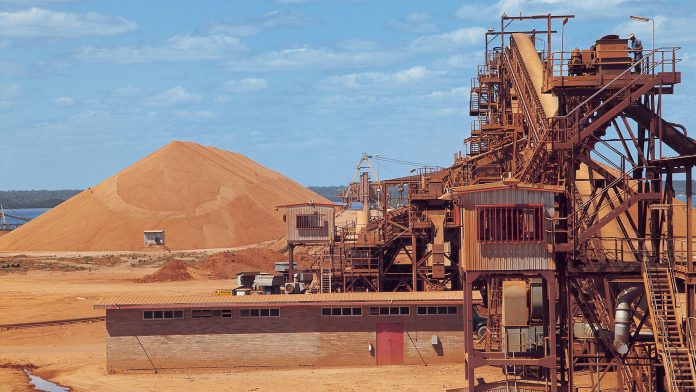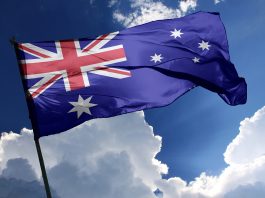Critical raw materials (CRM) are of increasing importance for a sustainable future. Editor Maddie Hall discusses the future of CRM production in the Australian state of Queensland, with a spokesperson of the Queensland Government.
It is difficult to overstate the importance of critical minerals, especially as countries strive to meet climate change targets. They are vital for everything from environmental technologies to space exploration technologies.
Australia is, according to the 2023 Innovate UK report, a top producer of several critical raw materials. The Innovation Platform Editor Maddie Hall spoke with a Queensland Government spokesperson to find out more about Queensland’s plans to continue its excellent production.
Can you outline the Queensland Critical Minerals Strategy and its key objectives? How does the Saint Elmo Vanadium Project align with the strategy, and what other critical mineral projects are a priority for the Queensland Government?
The Queensland Critical Minerals Strategy oversees $245m in investment to accelerate the development of Queensland’s critical minerals industry.
The strategy is about positioning Queensland as a leader in the global critical minerals market and future proofing the next generation of jobs for Queensland through the development of new industries spanning the entire value chain – from mining to the final product – to drive innovation and create jobs.
Several key actions have already been taken, including:
- Reducing rent to zero for mineral exploration permits for five years, making Queensland the lowest cost jurisdiction in Australia to hold mineral exploration tenures.
- Establishing a dedicated office, Critical Minerals Queensland, that serves as a central point of contact for investors and stakeholders and facilitating growth in Queensland’s critical minerals sector.
- Opening the $5m Collaborative Development Program for applications to extract and process residual minerals in mine waste, aligning with our commitment to building a circular economy.
Further to this, $75m in funding has been pledged to establish Critical Minerals Zones, aimed at maximising collaboration opportunities, achieving resource efficiencies, and promoting sustainable development.
The Julia Creek/Richmond Critical Minerals Zone, where the Saint Elmo Vanadium Project is located, is the first of its kind established under the strategy, with plans for more zones in the North West Minerals Province.
The Queensland Government has also committed $75m to the Queensland Resources Common User Facility in Townsville, to support the development, extraction and production of critical minerals.
The strategy ties into other government initiatives, such as the Queensland New Industry Development Strategy, which focuses on critical minerals processing, manufacturing and product development – essential for transitioning to renewable energy technologies.
The $570m Queensland Battery Industry Strategy aims to leverage Queensland’s strengths in critical minerals and advanced manufacturing to accelerate our energy transition and create new economic opportunities.
The $100m Critical Minerals and Battery Technology Fund is designed to support companies to reach commercialisation and accelerate the pit-to-product supply chain to meet the growing demand for clean energy technologies.
These strategies also feed into the Queensland Energy and Jobs Plan, our roadmap for transitioning to a renewable future.
Why is vanadium significant and what is its potential?
As Queensland progresses toward its renewable energy targets, batteries, firming, and other storage options will become increasingly important for a reliable system.
It’s the use of vanadium in creating batteries that has put this element front and centre in conversations about renewable energy.
What is the Saint Elmo Vanadium Project?
Multicom Resources Ltd proposes to develop a greenfield, open cut mine, a processing plant to extract vanadium pentoxide, and associated infrastructure about 25km east of Julia Creek. It is expected the mine life will be at least 30 years.
The $470m project is expected to support 200 jobs during construction and about 100 ongoing jobs for a mine that has the capacity to produce up to 20,000 tonnes per annum of vanadium pentoxide.
How is the Queensland Government supporting the project and what is its current status?
The Saint Elmo Vanadium Project is a declared prescribed project under the State Development and Public Works Organisation Act 1971.
A prescribed project declaration allows Queensland’s Coordinator-General to work with local governments and regulators to ensure that there are no unnecessary delays in approvals required for a project.
The Saint Elmo Vanadium Project triggered a controlled action under the federal Environment Protection and Biodiversity Conservation Act 1999 in relation to listed threatened species and communities and was assessed under a single environmental impact statement (EIS) process as per the bilateral agreement with the Queensland Government.
The EIS was assessed by the Queensland Department of Environment, Science and Innovation under the Environmental Protection Act 1994 (EP Act). The EIS assessment report for the project can be accessed via this link.
As part of the EIS process, the Office of the Coordinator-General undertook a social impact assessment under the Strong and Sustainable Resource Communities Act 2017. Conditions were set to require the project to provide benefits for nearby regional communities (Richmond and Julia Creek), including skills development and training and local procurement.
How will the Saint Elmo Vanadium Project contribute to Queensland’s broader energy transition goals? Is it expected to pave the way for additional vanadium projects in Queensland?
The Saint Elmo Vanadium Project remains on target to be one of the first vanadium mines to be established in north-west Queensland. The Office of the Coordinator-General is working with several other vanadium proponents seeking to establish mines in north-west Queensland.
The vanadium projects are at various stages of development and will support Queensland’s transition to a net-zero emissions future and help tap into a burgeoning global market for critical minerals.
Given the importance of critical minerals for meeting broader Queensland Government strategic objectives and recognising access to secure water as a major impediment to project development, the Coordinator-General has directed Sunwater Limited to undertake a strategic assessment of water delivery options under the State Development and Public Works Organisation (Julia Creek-Richmond Critical Minerals Zone Water Delivery Options) Amendment Regulation 2023.
This work is to be completed by Sunwater by mid-2024.
Please note, this article will also appear in the 18th edition of our quarterly publication.









